The LunaSol is a concept that is based on the McLuxIII-Series of lights, but yet it is different enough to warrant a seperate FAQ.
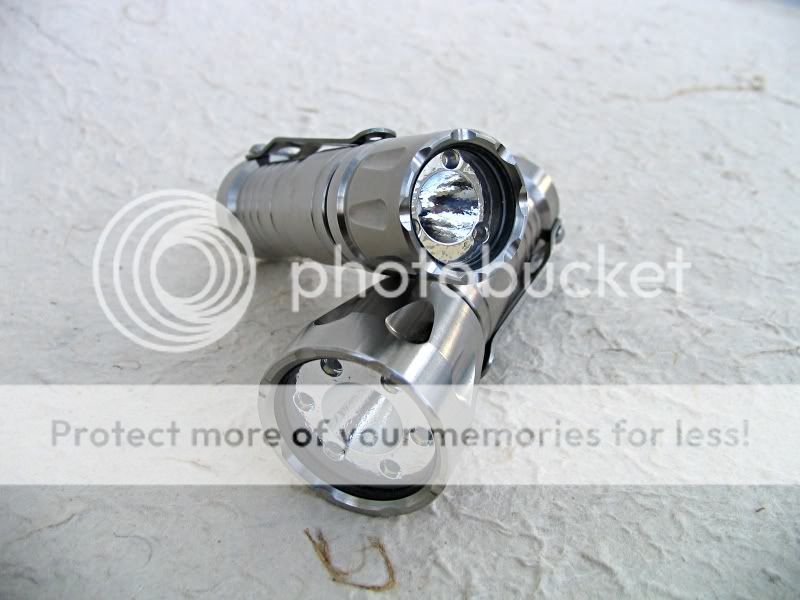
The Concept of the LunaSol
The LunaSol, correctly named McLuxIII-LunaSol27-PD or McLuxIII-LunaSol20-PD for the PD version, is, strictly speaking, just a new head for the existing McLuxIII-Series bodies. It operates just like the McLuxIII-Series lights, and it is made of titanium, as are its predecessors.
More information about the McLuxIII-Series can be obtained here:
McLuxIII-Ti-Series
https://www.candlepowerforums.com/threads/143519
There are two different LunaSol heads, a 27mm and a 20mm variant, which will be discussed below.
The LunaSol27
The LunaSol now offers not only 2 levels of light, it also offers two different beam shapes. The "low level" now is not only lower in luminous flux, but it is also a flood beam with no hotspot whereas the "high level" is a medium throw beam.
This is achieved by a combination of 6 Nichia 310CS 3mm LEDs that are grouped around a center LED, a Cree XR-E. The Nichias produce the flood beam, and the XR-E the high beam.
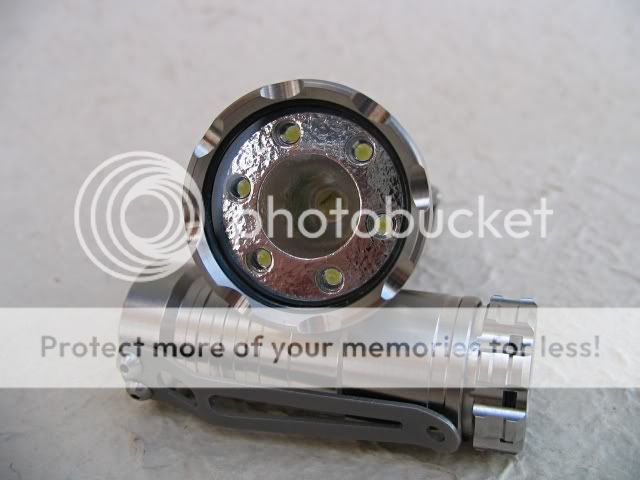
Here's a preliminary review of the prototype of the LS27:
https://www.candlepowerforums.com/threads/168049
Here are Don's words about it:
https://www.candlepowerforums.com/threads/192915
And here's a passaround of another prototype with comments:
http://www.cpfmarketplace.com/mp/showthread.php?t=172715
While a lot of different combinations including alternate numbers of batteries could be envisioned, the first wave of LS27 lights are 1x123 form factor and use the PD-Pack, which ca be swapped out for the C-Pack, provided you have one. The driver can handle primary as well as Li-Ion cells.
How does it work?
The Luna Sol works just like the other McLuxIII lights ... depending on the power pack used you get:
PD-Pack: from any position of the head, depress the piston for momentary low/flood, and depress more for momentary high/throw. For constant activation, screw in the head to achieve constant low/flood and screw further to obtain constant high/throw.
C-Pack: position the head in any mode you like, and use the McClicky of the C-Pack to switch the light on and off, either in constant mode (by clicking it on) or momentary (without clicking it on)
low or flood mode --> only the 6 Nichias light up
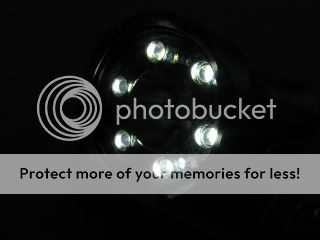
high or throw mode --> the Cree fires up in addition to that
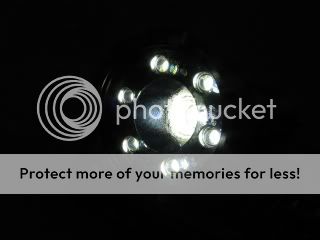
Here's an image of the low flood beam:

And now the high beam, where you can see the 6 Nichias spreading some light outside the sharp spill of the Cree:
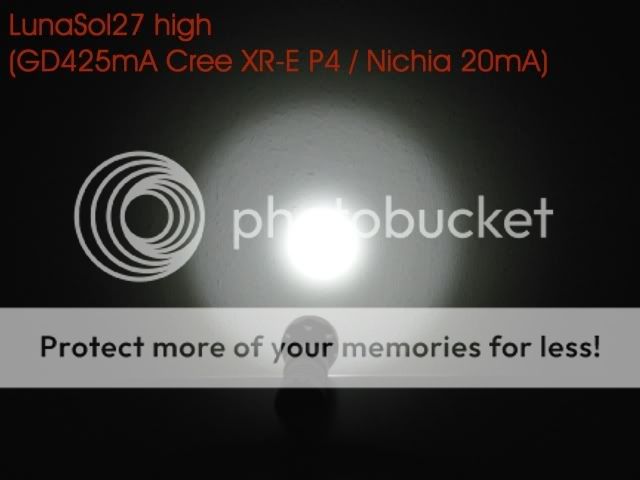
Technical Details
The LunaSol uses a special reflector that houses the surrounding Nichia LEDs as well es the Cree in the center with a Cree-optimized parabola, as known from the McR-XX reflector Series, the McR-17XR in the case of the LS27.
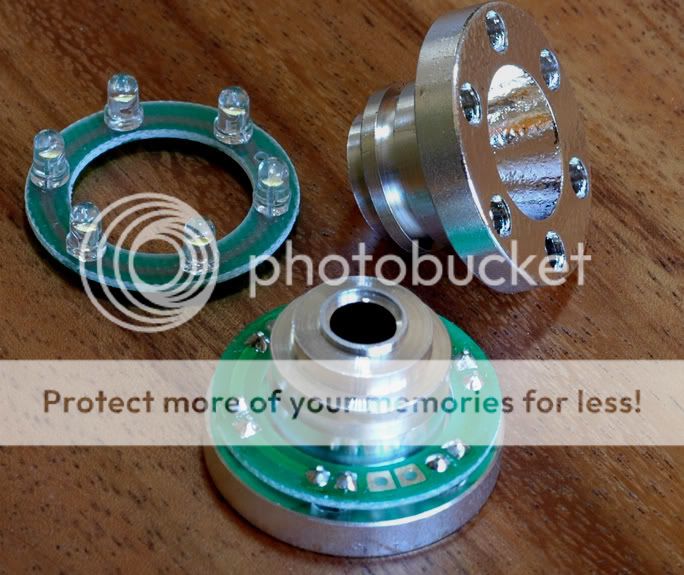
The electronics are specially made and developped by dat2zip of Sandwich Shoppe fame. There is a BBM (Bad Boy Mother) board driving the Nichias in Series as well as a daughter board driving the Cree.
Both boards are independent from each other, the BBM uses the Kilroy and the Daughter board the contact ring as electrical path. Sterling silver wire leads are joining mother and daughter boards
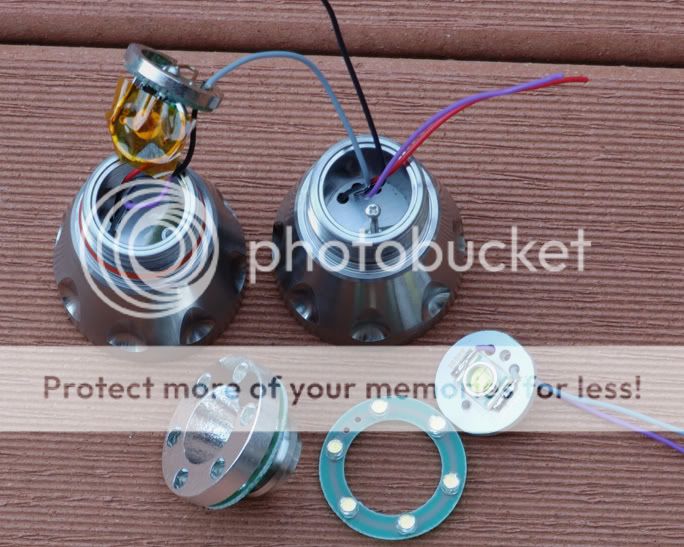
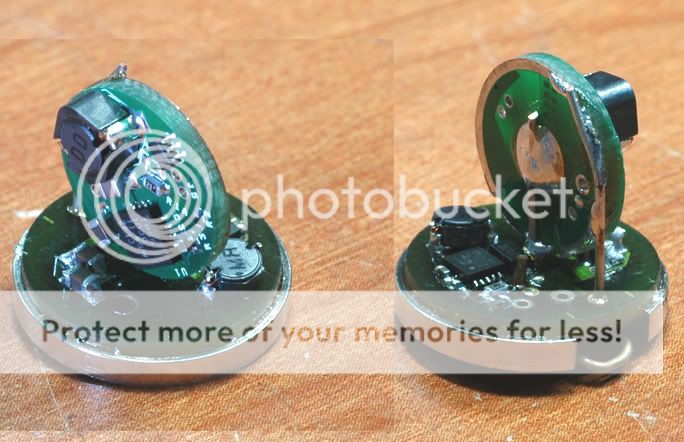
The daughter board could be any driver in theory, depending on the configuration of the light. The first wave of LS27 lights used the GD buck/boost driver (also by dat2zip) in order to be able to use a primary CR123 as well as a Li-Ion cell in the light.
While the drive currents could be set to anything one would like, Don offers this light with 425mA for the Cree and 18mA for the Nichias. The runtime on low is 8-10 hours and about 1.5 hours on high, similar to the typical McLuxIII-PD. The current draw on low is about 200mA at 2.9V Vin, and 800mA on high.
The rest of the technical details is similar to the McLuxIII-Ti-Series and can be looked up in the corresponding FAQ. The LS27 head is similar in exterior to the S27 head, but the interior is different.
Some words of caution from the creator: I put two layers of Kapton tape on the daughter board to insure isolation from the clamping screw and riser used in the assembly. I also have painted the exposed side of the mother board (BBM) with some poorman's comformal coating (nail polish) to ward off conductive dust bunnies from creating unwanted electrical paths. I mention this for those of you who might consider wanting to take the light apart. Please don't!
from the creator: I put two layers of Kapton tape on the daughter board to insure isolation from the clamping screw and riser used in the assembly. I also have painted the exposed side of the mother board (BBM) with some poorman's comformal coating (nail polish) to ward off conductive dust bunnies from creating unwanted electrical paths. I mention this for those of you who might consider wanting to take the light apart. Please don't!
The LunaSol20
The LunaSol20 is the smaller brother of the LS27, but it isn't just smaller, it is also somewhat different.
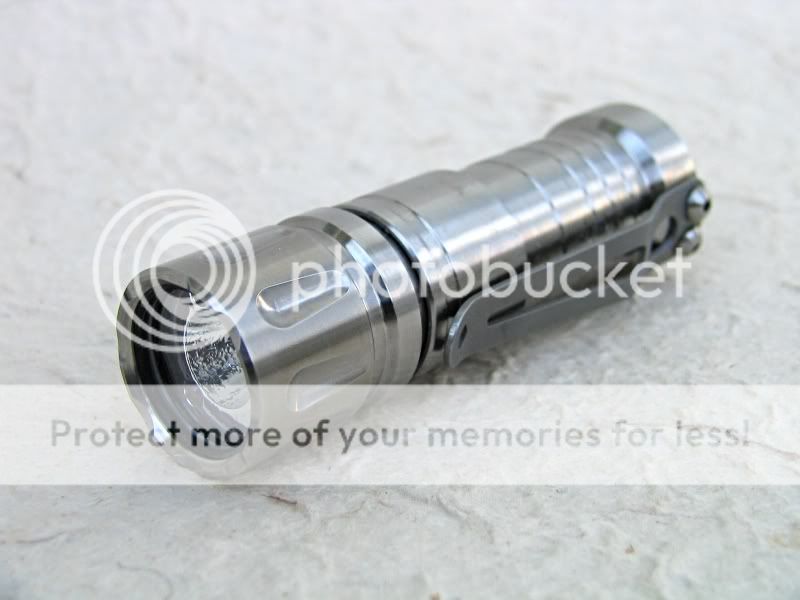
It is a 1" head only slightly longer than the classical Ti-PD and thus way more pocket friendly than the LS27. It is 3 1/2" long.
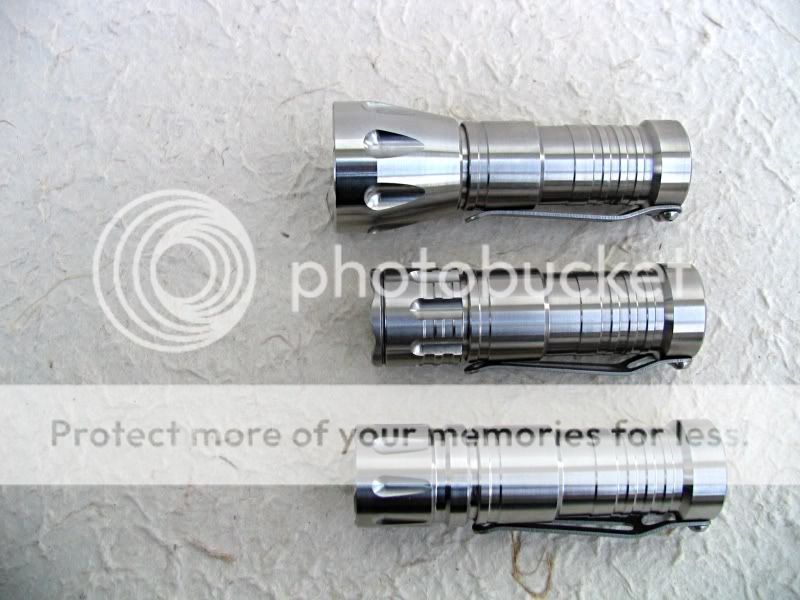
The window is 2 mm thick sapphire and is held between two #019 EPDM O-rings. The piston and head/ sleeve O-rings are silicone (#016 & #017 respectively). There is a green H3 vial in the piston.
It consists of 3 ea. Nichia 310DS LED's in a series string driven at ~18 mA by a BBM converter. The Osram Golden Dragon LED in center is driven at ~400 mA by a NG driver as mentioned above.
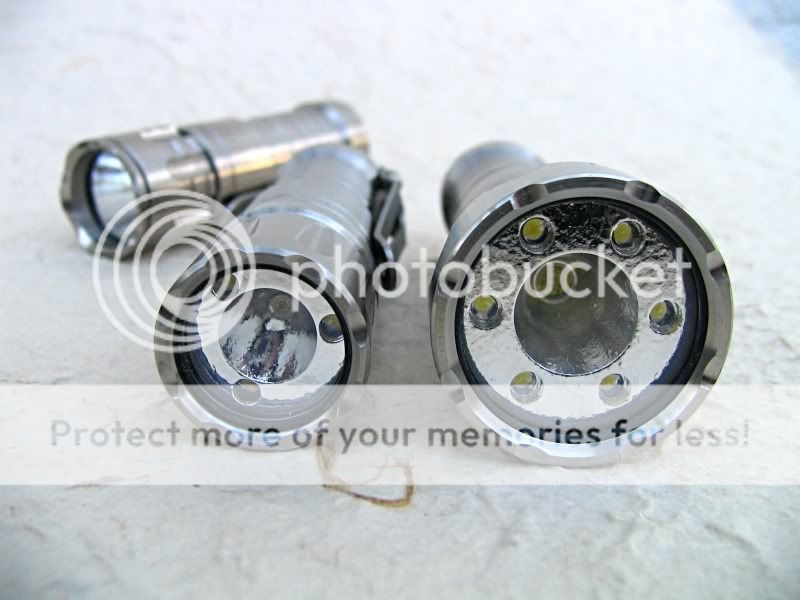
This means that the low of the LS20 is more than half the light of the LS27 despite having only 50% of the LEDs.
Also, the flood beam is somewhat triangular in close-up due to the tight spacing inside this head.

Here's a runtime graph of a random LS20 on high using Don's IS, meaning the y-axis is showing true values for the luminoous flux ... about 75lm on high.
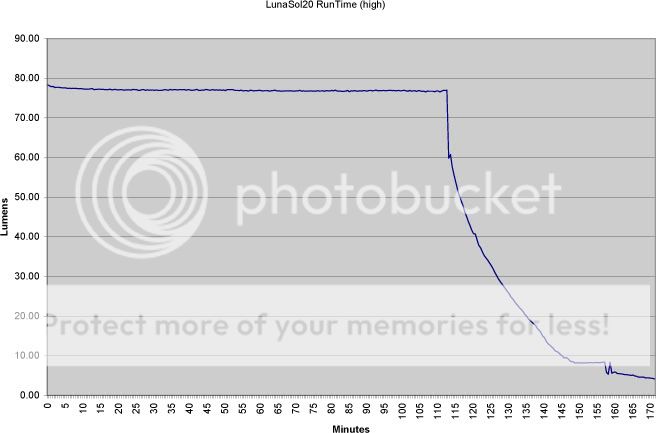
Expect that the LunaSol 20 would see double the runtime of the LunaSol 27 on low.
After 15 minutes on High we get the following thermal readings:
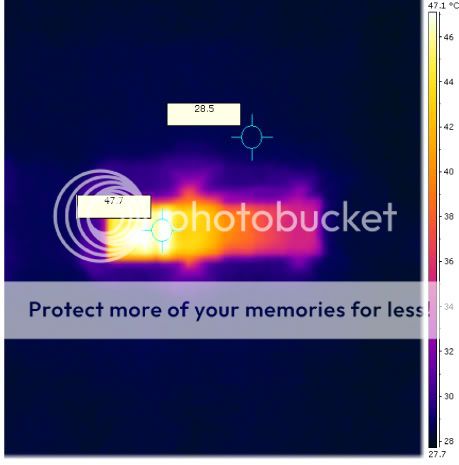
In the end, the LS20 has significantly more runtime, a little less light on low and high than the LS27, but sports a pocket friendy form factor. It is also one of the sexiest heads Don designed to date.
Here are some pics of the internals:
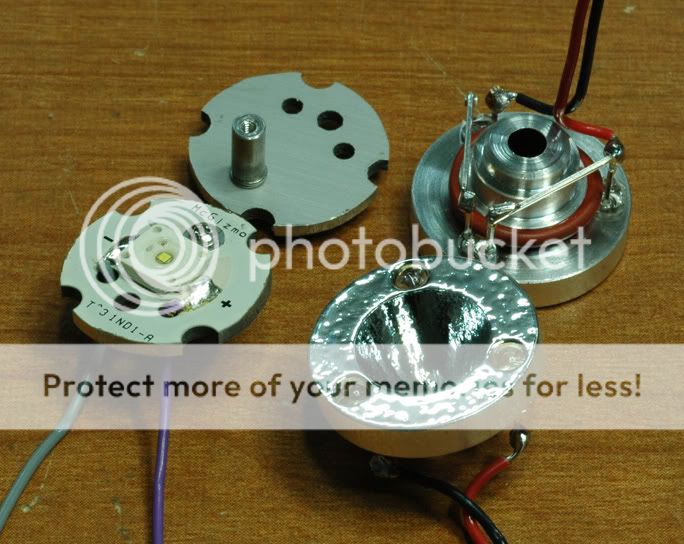
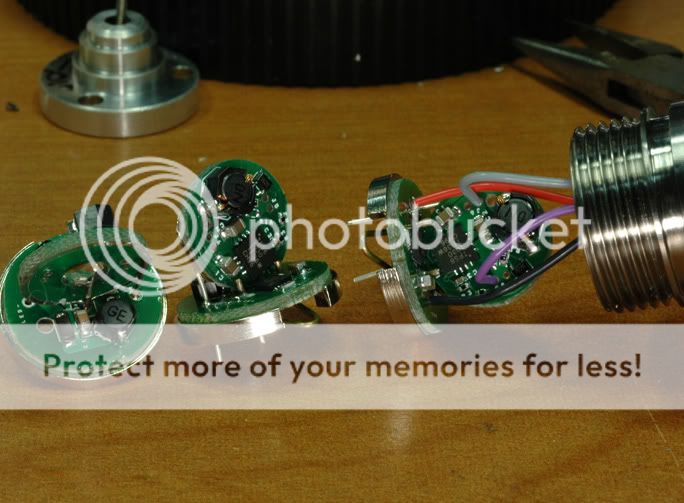
History Lesson
The LunaSol is the "production version" of an old prototype that was born about 2003:
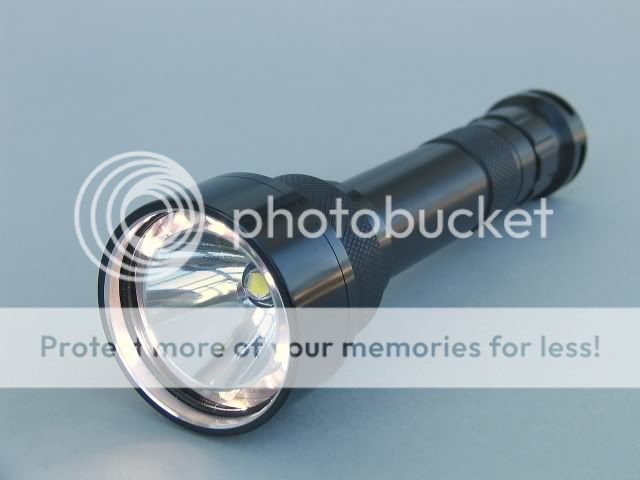
This light also has a ring of small LEDs surrounding a big one ... old Nichia 5mm LEDs and a Luxeon V LED, for those who remember
The concept was based on the McLux-"T" head style and had a rotating collar to switch modes between either 5mm or LuxV only.
It never made it past prototype stage ... until now. Finally.
Here's a pic of the LS27 prototype:
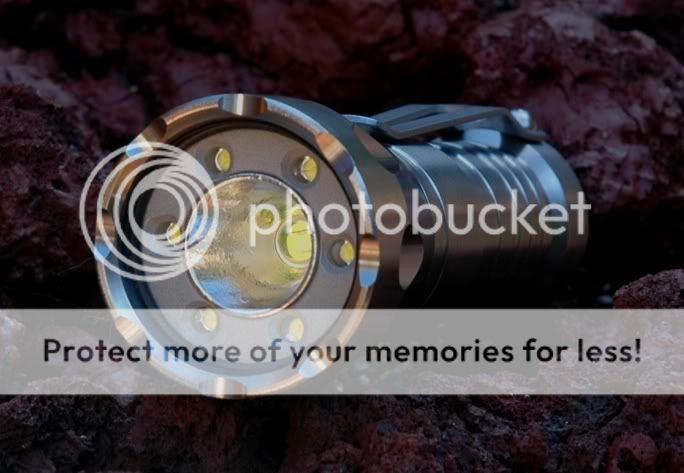
Performance / Beam Shots
The low mode is a radical departure from the McLuxIII-Series. It is brighter, more powerful, and it is broader, without a hotspot, and adapted for close-up work. This low mode is not shy, it is a work-mode and not a stealth-mode.
Here's a comparison of the low-modes of the LS27 and the PD:
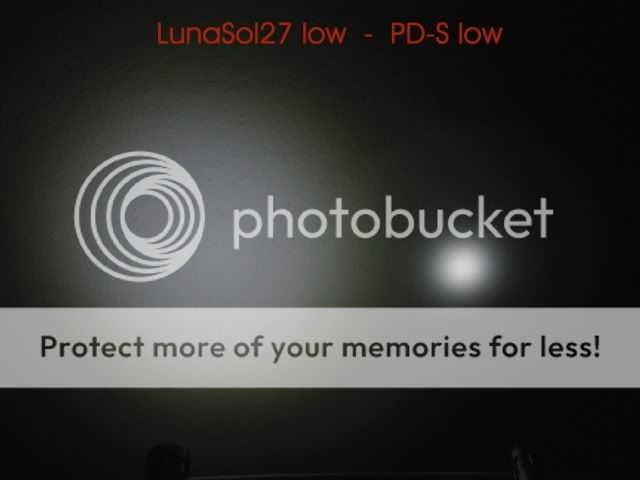
And here is is compared to a Mule driven at 300mA:
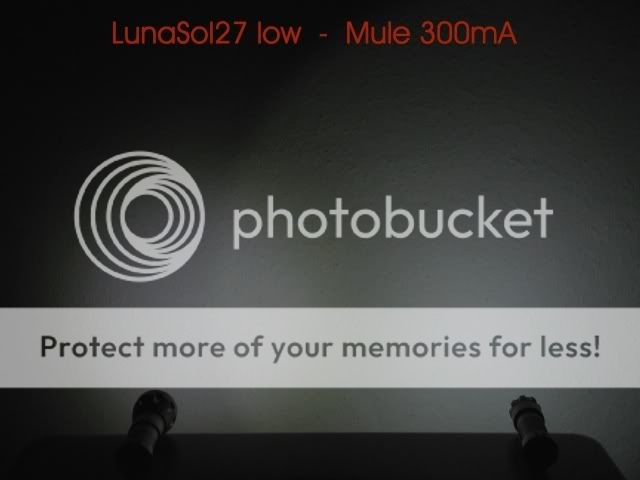
We do also have this in "real life":


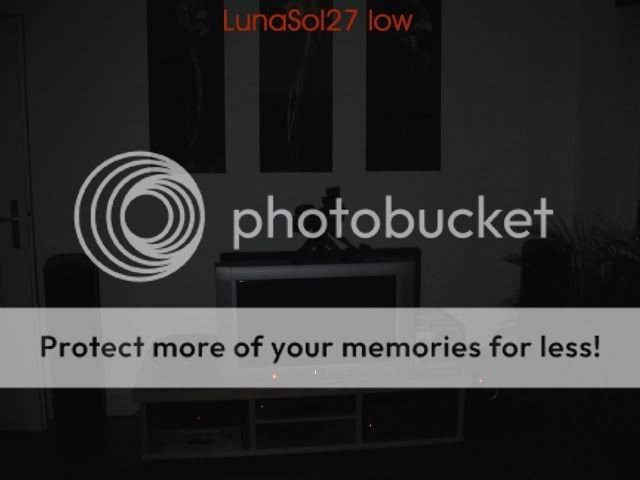
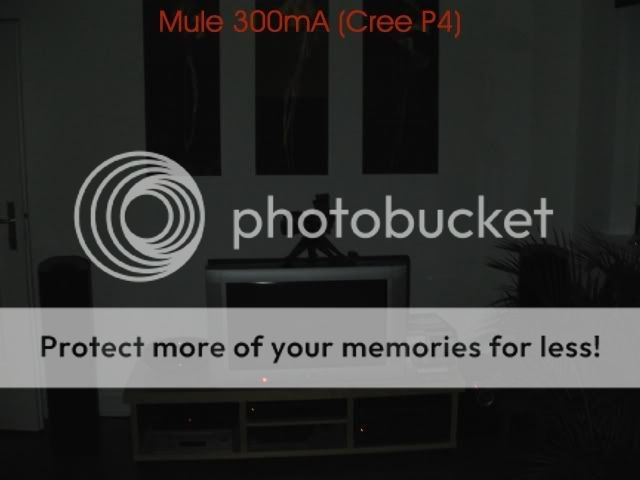
As mentioned above, the high mode has the typical profile of a Cree XR-E in a McR-17XR with the added spill of the running Nichias.
Here's a LS27 with a Cree XR-E P4 bin (early proto) vs a PD-S with SSC U-bin at 525mA:
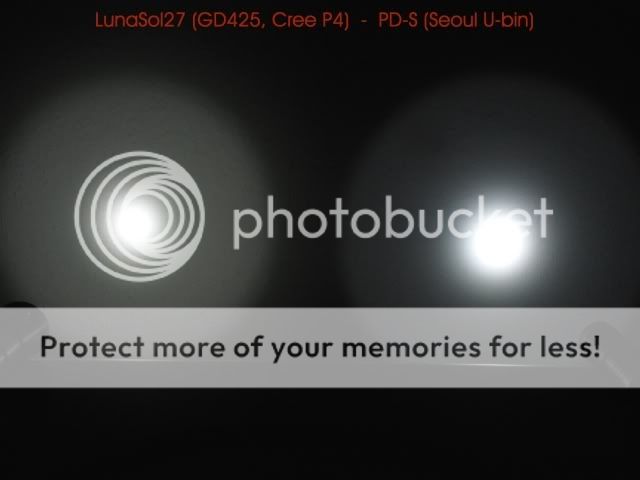
Real Life:
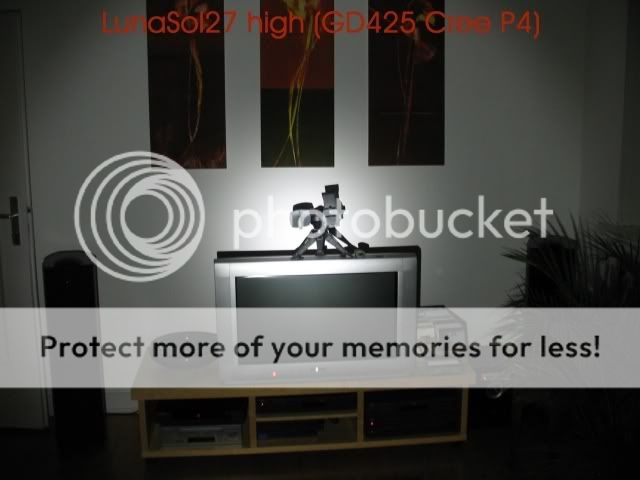
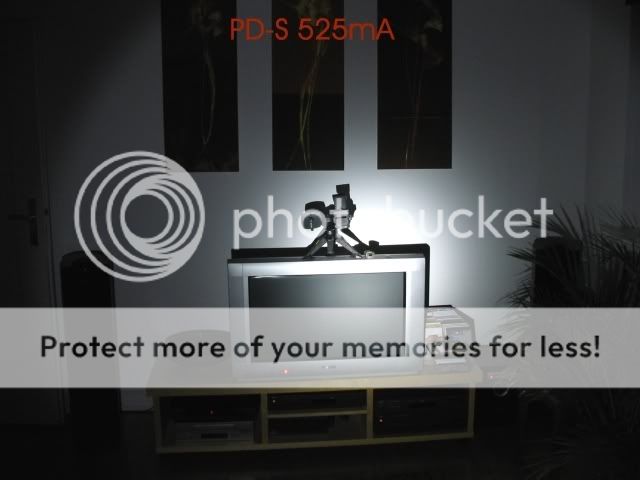
Here's the LS20 next to the LS27, both in low mode:
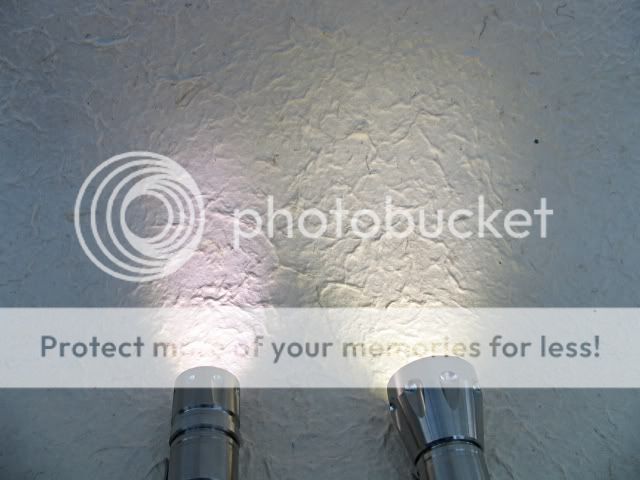
A comparison of both low modes in real life:
LS20:

LS27:

You see the sometwhat narrower beam with a negligable difference in brightness.
The LS20 (left) vs the Ti-PD (SSc U-bin at 525mA):

Lower Exposure:

The high beam of the LS20 is of similar shape but with slightly less punch than the Ti-PD. On a white wall. And ceiling, too.
Different Versions
The first wave of LS20 lights had a NG400 converter for the main gun, meaning Li-Ions are discouraged and the use of primary cells advised. The second large wave of LS20 lights use the GD converter that allows the use of Li-Ion cells.
The front window of the first batch of lights couldhave a potential leakage. See this thread for a description of th eproblem and a solution:
https://www.candlepowerforums.com/posts/2529161#post2529161
Some final words from the man:
"For a general purpose light, I think the LunaSol visits some new ground that many of us have visualized but have yet to experience first hand. I know this sounds like hype and feel free to take it as such (considering the source). However, I think the LunaSol 27 is incredibly useful and dynamic in its abilities. The flood from the Nichias is more concentrated than the Mule but similar in effect and lack of artifact and hot spot. What the LunaSol compromises when compared to specific or specialized illumination tools is more than made up for in its versatility, IMHO. One kind of neat by product in the design is the fact that low and high have their own independent drivers and it is conceivable that you could make a case of redundancy. One of the drivers could let out its magic smoke and provided it didn't compromise the battery source, the other driver could continue to provide light."
Have fun !

The Concept of the LunaSol
The LunaSol, correctly named McLuxIII-LunaSol27-PD or McLuxIII-LunaSol20-PD for the PD version, is, strictly speaking, just a new head for the existing McLuxIII-Series bodies. It operates just like the McLuxIII-Series lights, and it is made of titanium, as are its predecessors.
More information about the McLuxIII-Series can be obtained here:
McLuxIII-Ti-Series
https://www.candlepowerforums.com/threads/143519
There are two different LunaSol heads, a 27mm and a 20mm variant, which will be discussed below.
The LunaSol27
The LunaSol now offers not only 2 levels of light, it also offers two different beam shapes. The "low level" now is not only lower in luminous flux, but it is also a flood beam with no hotspot whereas the "high level" is a medium throw beam.
This is achieved by a combination of 6 Nichia 310CS 3mm LEDs that are grouped around a center LED, a Cree XR-E. The Nichias produce the flood beam, and the XR-E the high beam.

Here's a preliminary review of the prototype of the LS27:
https://www.candlepowerforums.com/threads/168049
Here are Don's words about it:
https://www.candlepowerforums.com/threads/192915
And here's a passaround of another prototype with comments:
http://www.cpfmarketplace.com/mp/showthread.php?t=172715
While a lot of different combinations including alternate numbers of batteries could be envisioned, the first wave of LS27 lights are 1x123 form factor and use the PD-Pack, which ca be swapped out for the C-Pack, provided you have one. The driver can handle primary as well as Li-Ion cells.
How does it work?
The Luna Sol works just like the other McLuxIII lights ... depending on the power pack used you get:
PD-Pack: from any position of the head, depress the piston for momentary low/flood, and depress more for momentary high/throw. For constant activation, screw in the head to achieve constant low/flood and screw further to obtain constant high/throw.
C-Pack: position the head in any mode you like, and use the McClicky of the C-Pack to switch the light on and off, either in constant mode (by clicking it on) or momentary (without clicking it on)
low or flood mode --> only the 6 Nichias light up

high or throw mode --> the Cree fires up in addition to that

Here's an image of the low flood beam:

And now the high beam, where you can see the 6 Nichias spreading some light outside the sharp spill of the Cree:

Technical Details
The LunaSol uses a special reflector that houses the surrounding Nichia LEDs as well es the Cree in the center with a Cree-optimized parabola, as known from the McR-XX reflector Series, the McR-17XR in the case of the LS27.

The electronics are specially made and developped by dat2zip of Sandwich Shoppe fame. There is a BBM (Bad Boy Mother) board driving the Nichias in Series as well as a daughter board driving the Cree.
Both boards are independent from each other, the BBM uses the Kilroy and the Daughter board the contact ring as electrical path. Sterling silver wire leads are joining mother and daughter boards


The daughter board could be any driver in theory, depending on the configuration of the light. The first wave of LS27 lights used the GD buck/boost driver (also by dat2zip) in order to be able to use a primary CR123 as well as a Li-Ion cell in the light.
While the drive currents could be set to anything one would like, Don offers this light with 425mA for the Cree and 18mA for the Nichias. The runtime on low is 8-10 hours and about 1.5 hours on high, similar to the typical McLuxIII-PD. The current draw on low is about 200mA at 2.9V Vin, and 800mA on high.
The rest of the technical details is similar to the McLuxIII-Ti-Series and can be looked up in the corresponding FAQ. The LS27 head is similar in exterior to the S27 head, but the interior is different.
Some words of caution
 from the creator: I put two layers of Kapton tape on the daughter board to insure isolation from the clamping screw and riser used in the assembly. I also have painted the exposed side of the mother board (BBM) with some poorman's comformal coating (nail polish) to ward off conductive dust bunnies from creating unwanted electrical paths. I mention this for those of you who might consider wanting to take the light apart. Please don't!
from the creator: I put two layers of Kapton tape on the daughter board to insure isolation from the clamping screw and riser used in the assembly. I also have painted the exposed side of the mother board (BBM) with some poorman's comformal coating (nail polish) to ward off conductive dust bunnies from creating unwanted electrical paths. I mention this for those of you who might consider wanting to take the light apart. Please don't!The LunaSol20
The LunaSol20 is the smaller brother of the LS27, but it isn't just smaller, it is also somewhat different.

It is a 1" head only slightly longer than the classical Ti-PD and thus way more pocket friendly than the LS27. It is 3 1/2" long.

The window is 2 mm thick sapphire and is held between two #019 EPDM O-rings. The piston and head/ sleeve O-rings are silicone (#016 & #017 respectively). There is a green H3 vial in the piston.
It consists of 3 ea. Nichia 310DS LED's in a series string driven at ~18 mA by a BBM converter. The Osram Golden Dragon LED in center is driven at ~400 mA by a NG driver as mentioned above.

This means that the low of the LS20 is more than half the light of the LS27 despite having only 50% of the LEDs.
Also, the flood beam is somewhat triangular in close-up due to the tight spacing inside this head.

Here's a runtime graph of a random LS20 on high using Don's IS, meaning the y-axis is showing true values for the luminoous flux ... about 75lm on high.

Expect that the LunaSol 20 would see double the runtime of the LunaSol 27 on low.
After 15 minutes on High we get the following thermal readings:

In the end, the LS20 has significantly more runtime, a little less light on low and high than the LS27, but sports a pocket friendy form factor. It is also one of the sexiest heads Don designed to date.
Here are some pics of the internals:


History Lesson
The LunaSol is the "production version" of an old prototype that was born about 2003:

This light also has a ring of small LEDs surrounding a big one ... old Nichia 5mm LEDs and a Luxeon V LED, for those who remember
The concept was based on the McLux-"T" head style and had a rotating collar to switch modes between either 5mm or LuxV only.
It never made it past prototype stage ... until now. Finally.

Here's a pic of the LS27 prototype:

Performance / Beam Shots
The low mode is a radical departure from the McLuxIII-Series. It is brighter, more powerful, and it is broader, without a hotspot, and adapted for close-up work. This low mode is not shy, it is a work-mode and not a stealth-mode.
Here's a comparison of the low-modes of the LS27 and the PD:

And here is is compared to a Mule driven at 300mA:

We do also have this in "real life":




As mentioned above, the high mode has the typical profile of a Cree XR-E in a McR-17XR with the added spill of the running Nichias.
Here's a LS27 with a Cree XR-E P4 bin (early proto) vs a PD-S with SSC U-bin at 525mA:

Real Life:


Here's the LS20 next to the LS27, both in low mode:

A comparison of both low modes in real life:
LS20:

LS27:

You see the sometwhat narrower beam with a negligable difference in brightness.
The LS20 (left) vs the Ti-PD (SSc U-bin at 525mA):

Lower Exposure:

The high beam of the LS20 is of similar shape but with slightly less punch than the Ti-PD. On a white wall. And ceiling, too.
Different Versions
The first wave of LS20 lights had a NG400 converter for the main gun, meaning Li-Ions are discouraged and the use of primary cells advised. The second large wave of LS20 lights use the GD converter that allows the use of Li-Ion cells.
The front window of the first batch of lights couldhave a potential leakage. See this thread for a description of th eproblem and a solution:
https://www.candlepowerforums.com/posts/2529161#post2529161
Some final words from the man:
"For a general purpose light, I think the LunaSol visits some new ground that many of us have visualized but have yet to experience first hand. I know this sounds like hype and feel free to take it as such (considering the source). However, I think the LunaSol 27 is incredibly useful and dynamic in its abilities. The flood from the Nichias is more concentrated than the Mule but similar in effect and lack of artifact and hot spot. What the LunaSol compromises when compared to specific or specialized illumination tools is more than made up for in its versatility, IMHO. One kind of neat by product in the design is the fact that low and high have their own independent drivers and it is conceivable that you could make a case of redundancy. One of the drivers could let out its magic smoke and provided it didn't compromise the battery source, the other driver could continue to provide light."
Have fun !
Last edited:

